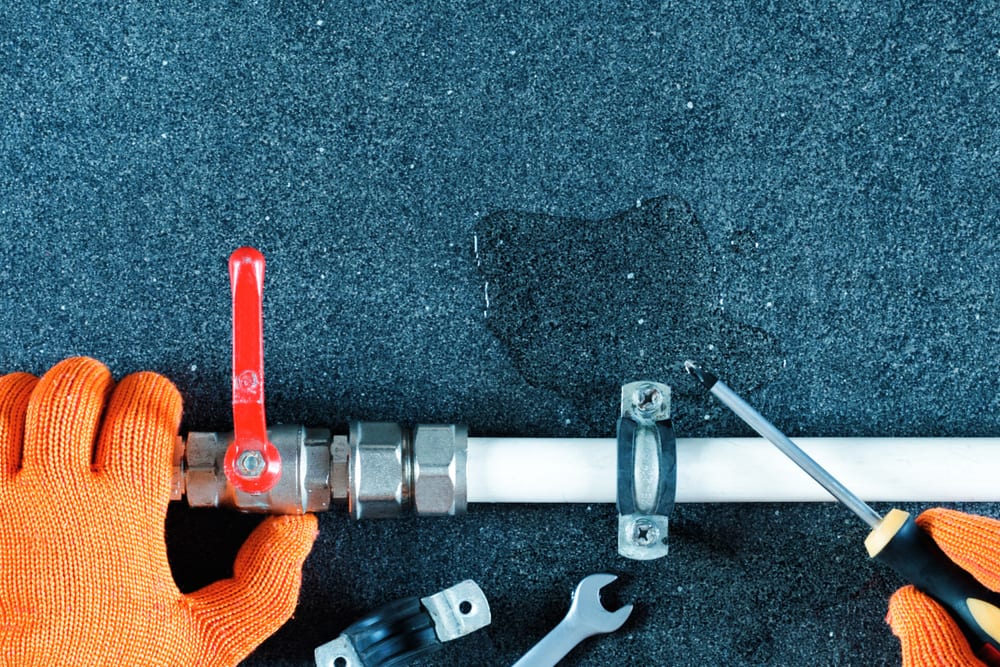Detecting Hidden Water Line Leaks: Six Practical Detection Tricks
Detecting Hidden Water Line Leaks: Six Practical Detection Tricks
Blog Article
Everybody has their private opinion in relation to Locating water leaks.

Early discovery of dripping water lines can mitigate a possible catastrophe. Some tiny water leakages may not be noticeable.
1. Take A Look At the Water Meter
Every house has a water meter. Examining it is a guaranteed way that helps you uncover leaks. For starters, switch off all the water resources. Guarantee no person will certainly flush, make use of the faucet, shower, run the cleaning machine or dish washer. From there, go to the meter and also watch if it will transform. Considering that no one is utilizing it, there should be no motions. If it relocates, that suggests a fast-moving leakage. If you detect no modifications, wait an hour or two and also check back once again. This implies you may have a slow leakage that could also be below ground.
2. Examine Water Usage
If you detect sudden changes, in spite of your intake being the very same, it means that you have leaks in your plumbing system. A sudden spike in your expense suggests a fast-moving leak.
A consistent increase every month, also with the very same practices, shows you have a sluggish leakage that's additionally gradually escalating. Call a plumber to thoroughly inspect your residential or commercial property, particularly if you really feel a cozy area on your floor with piping beneath.
3. Do a Food Coloring Test
When it pertains to water intake, 30% originates from commodes. Examination to see if they are running effectively. Decline flecks of food color in the tank and wait 10 mins. If the shade somehow infiltrates your bowl throughout that time without flushing, there's a leakage in between the storage tank and dish.
4. Asses Exterior Lines
Do not fail to remember to check your exterior water lines as well. Should water permeate out of the connection, you have a loosened rubber gasket. One small leakage can throw away heaps of water and also surge your water expense.
5. Evaluate and Evaluate the Scenario
Homeowners must make it a practice to examine under the sink counters as well as also inside cabinets for any type of bad odor or mold growth. These 2 warnings show a leakage so timely attention is required. Doing regular examinations, also bi-annually, can save you from a major issue.
Examine for discolorations and also damaging as the majority of appliances and pipelines have a life expectancy. If you think leaking water lines in your plumbing system, don't wait for it to intensify.
Early detection of leaking water lines can reduce a prospective catastrophe. Some tiny water leaks might not be noticeable. Examining it is a guaranteed method that helps you discover leakages. One small leak can waste loads of water and surge your water expense.
If you presume dripping water lines in your plumbing system, don't wait for it to intensify.
WARNING SIGNS OF WATER LEAKAGE BEHIND THE WALL
PERSISTENT MUSTY ODORS
As water slowly drips from a leaky pipe inside the wall, flooring and sheetrock stay damp and develop an odor similar to wet cardboard. It generates a musty smell that can help you find hidden leaks.
MOLD IN UNUSUAL AREAS
Mold usually grows in wet areas like kitchens, baths and laundry rooms. If you spot the stuff on walls or baseboards in other rooms of the house, it’s a good indicator of undetected water leaks.
STAINS THAT GROW
When mold thrives around a leaky pipe, it sometimes takes hold on the inside surface of the affected wall. A growing stain on otherwise clean sheetrock is often your sign of a hidden plumbing problem.
PEELING OR BUBBLING WALLPAPER / PAINT
This clue is easy to miss in rooms that don’t get much use. When you see wallpaper separating along seams or paint bubbling or flaking off the wall, blame sheetrock that stays wet because of an undetected leak.
BUCKLED CEILINGS AND STAINED FLOORS
If ceilings or floors in bathrooms, kitchens or laundry areas develop structural problems, don’t rule out constant damp inside the walls. Wet sheetrock can affect adjacent framing, flooring and ceilings.
https://www.servicemasterbyzaba.com/blog/how-to-detect-water-leakage-in-walls/

I hope you enjoyed our topic about Hacks to detect leaks. Thanks a lot for spending some time to read through our article. Liked our blog entry? Please share it. Let others locate it. Thanks for going through it.
Damage control? Call us. Report this page